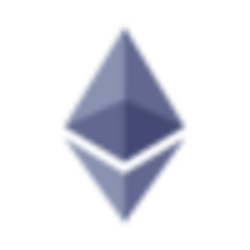-
Ethereum introduces its ERC-7779 token standard, designed to enhance smart account interoperability and streamline user experiences as the platform evolves.
-
This innovative standard builds on previous Ethereum Enhancement Proposals (EIPs), promising to simplify wallet transitions and improve asset management.
-
Richard Meissner commented, “Smart accounts bring a lot of benefits…the upcoming Pectra Upgrade extends this to EOAs,” highlighting the significance of the new ERC-7779.
Discover how Ethereum’s ERC-7779 token standard is set to enhance interoperability and user experience in the crypto landscape, tackling wallet migration challenges.
ERC-7779: Purpose and Application in Ethereum’s Evolution
ERC-7779 emerges as a vital upgrade within the Ethereum ecosystem, building upon the concepts introduced by earlier Ethereum Improvement Proposals, particularly EIP-7702. This earlier proposal facilitated the operational capabilities of externally owned accounts (EOAs), integrating features traditionally reserved for smart contracts. The introduction of ERC-7779 aims to create a cohesive environment where these smart accounts can interact seamlessly, promoting interoperability within the rapidly growing network.
As Richard Meissner, co-founder of Safe, articulated, the new token standard is pivotal in ensuring that these smart accounts remain functional and interoperable across diverse applications. He stated, “Smart accounts bring a lot of benefits. One of them is the possibility for upgradeable logic.” This sets the stage for a more adaptable Ethereum experience.
Marissa Posnor, a product manager at the Ethereum Foundation, elaborated on the necessity of ERC-7779: “The standard interface for managing delegated EOAs not only simplifies the user journey but also enhances security during transitions.” This means users can expect a robust structure geared towards simplifying complex processes as Ethereum’s ecosystem continues to expand.
The Critical Role of ERC-7779 in User Experience
In enhancing user experience (UX), ERC-7779 is designed to eliminate technical hurdles associated with wallet migrations. David Kim, tech lead at Trust Wallet, emphasized that the standard strikes a “genuinely helpful balance,” allowing developers to adopt it easily. This focus on usability is crucial, as a more intuitive interface could cultivate wider adoption among non-technical users.
However, not all industry leaders view the new standard as a panacea for user challenges. Konrad Kopp, co-founder at Rhinestone, noted that while ERC-7779 may not directly simplify the UX for end-users, it significantly enhances the capabilities of EOAs, enabling secure transitions between different smart account implementations.
Innovative Use Cases and Promoting Developer Adoption
Beyond interoperability, ERC-7779 provides a foundation for advanced features such as transaction batching, automation, and gas abstraction—elements that could redefine how developers engage with the Ethereum network. Fangting Liu, tech lead at Alchemy, articulated that this collaborative token standard is designed to be “easily adoptable” across the ecosystem. This simplicity is crucial for encouraging developer participation and innovation.
“ERC-7779 introduces a solution to mitigate risks associated with improper storage management in smart account implementations,” Liu added. This focus on flexibility and security is significant, creating opportunities for developers and users alike to navigate the Ethereum landscape with confidence.
As this new standard gains traction, it could catalyze a substantial shift within the Ethereum ecosystem, ensuring that smart accounts evolve into essential tools used by both developers and everyday users. Meissner optimistically remarked that this could lead to making “smart accounts superpowers go mainstream.”
Conclusion
In summary, the ERC-7779 token standard represents a critical advancement in the Ethereum ecosystem, promising enhanced interoperability and user experience. With important contributions from key industry leaders, it sets a strong foundation for future innovations. As the Ethereum landscape continues to evolve, ERC-7779 provides essential tools for developers and users alike, fostering a more secure, flexible, and interconnected ecosystem.
